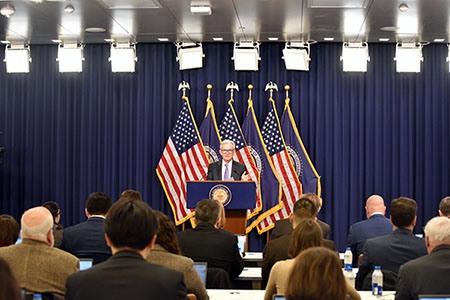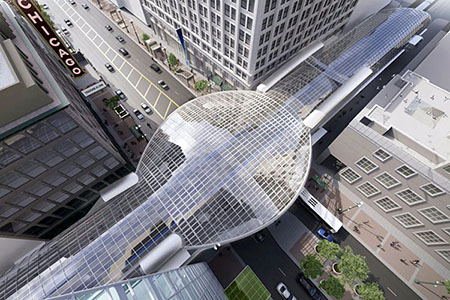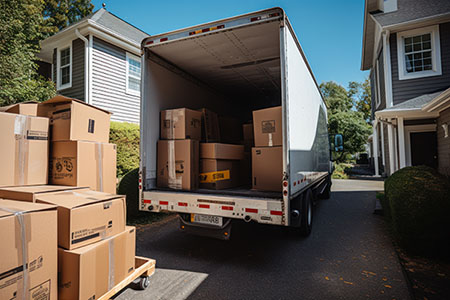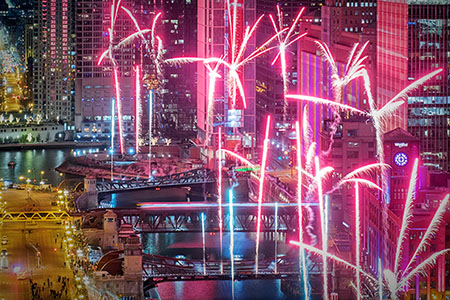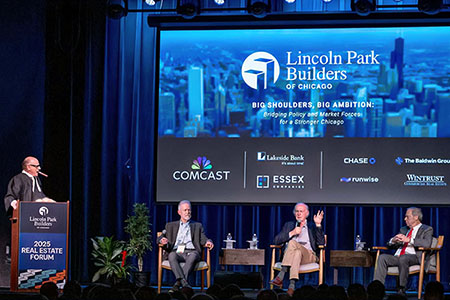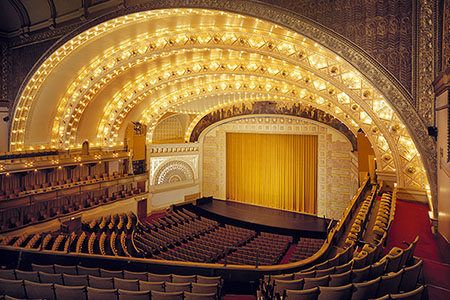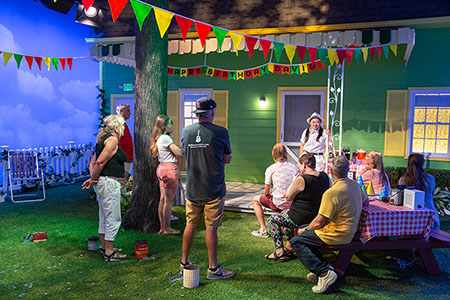

(Above) Let’s Survive Forever, a mirrored room at WNDR Museum in which you may glimpse infinity for 60 seconds.
Mar. 30, 2021 – As Chicago gradually emerges from its forced cultural lockdown, the WNDR Museum welcomes visitors once again. The West Loop museum, actually a playful gallery of sorts, has reopened with bold new art experiences and enhanced safety measures.
“When the pandemic hit, we stepped back and asked ourselves how we could reimagine the space without the touch factor while remaining an interactive, immersive experience,” says Ashley Vogel, the museum’s creative manager. “That allowed us the opportunity to work with different artists, collectives, studios, makers, hackers, and animators, many of them locals, to make WNDR the experience it is today.”

(Photo) New installations include a storefront mural by artist and social activist Keith Haring. Photo provided by WNDR Museum.
Even if you have visited in the past, surprises are in store.
“WNDR has a whole community of talent that usually isn’t highlighted in traditional museums,” Vogel says.
One new installation is Flux Room, a serene 360-degree animated meditation on forest, mountains, rock formations, and architecture that was generated through artificial intelligence and machine learning. The experience was curated by Chicago-based Santiago X, an architect, multidisciplinary artist, and Indigenous futurist.
Another is I Heard There Was a Secret Chord, a darkened alcove serenaded by a virtual choir humming Leonard Cohen’s signature Hallelujah. The choir is powered by the number of people listening to the hymn at that moment according to streaming data. (The number was 471 during my recent visit.) The installation was created by Daily tous les jours, a Montreal art and design studio. You’ll be humming along.
“It’s hard to say which installation is my favorite, but I really like that one,” Vogel says. “It’s very soothing, and it enhances the power of people from all over the world to come together.”
Continue to walk along the marked passageways, and the surroundings will change by your very presence. At various points, your shadows are colorized, your dance moves appear kaleidoscopic, and your image translates into black and white pixels. A smartphone is a useful companion. Not only is photography encouraged, but your texted selfies become part of the art.
“‘Interactive’ doesn’t necessarily have to be ‘touch,’” Vogel says.

Several installations were reconfigured to eliminate human hands. Take, for example, Lands by Sonde media arts collective of Chicago. It’s a sparkly nook wrapped in repurposed compact discs. Pre-pandemic, you turned knobs to manufacture new music and pulsate the colored lights. Now you simply wave your hands inches above openings in a raised black box to achieve the same effect.
Another reimagination is the live artists-in-residence who create on the premises. Until it’s safe for them to return, a retinue of robotic arms paints on canvases in an installation called Away From Keyboard Residency by AppleButter Animated of Chicago.
Glimpse infinity for 60 seconds
Returning visitors are sure to find familiar stops along the route. Perhaps the most popular and widely photographed is the infinity room, formally named Let’s Survive Forever, by Japanese avant-garde artist Yayoi Kusama. The mirrored room is filled with shiny silver orbs of varying sizes and heights that reflect your image into forever-ness. Take a tip: Have your camera ready before you enter the space. You’ve only got 60 seconds, a time limit set by Kusama herself, to get your shots. There’s no re-entry.

Equally stunning is the LED Light Floor (left) created by BrightLogic in Midland Park, New Jersey. As you walk, prance, and twirl along the cobalt blue floor in a darkened, mirrored room, swirls and swaths of hue follow your footsteps.
Instagrammers love the Ames Room (right), where forced perspective and geometric wall patterns distort human scale. The illusion is best realized by photographing two people in opposite corners of the room.
WNDR Museum

One appears very tall, and the other very small. The perfect spot to set your camera is on the edge of a peephole cut into a side wall. Use a timer or ask one of the friendly staffers, called ambassadors, to snap for you. The Ames Room was designed by Wonderworks LLC in Chicago.
“We’re a place that wants to ignite curiosity and creativity,” Vogel says. “We believe we are all artists. That’s what we try to help bring out in our guests through their experiences.”
After your visit, go home and make something.

WNDR tickets are timed and must be purchased in advance online to ensure reduced occupancy and social distancing. Admission prices begin at $30; children ages 2 and under are free. Hours, which are subject to change, are Thursdays through Saturdays, noon to 8:00 p.m.; Sundays, noon to 6:00 p.m.
Frontline workers and their families may qualify for complimentary admission on weekends from 11:00 a.m. to noon. Email a photo of your employee ID to hello@wndrmuseum.com.
Covid-19 rules and guidelines apply, including face masks.
More information: WNDR Museum
Photos by Pamela Dittmer McKuen except where noted.




